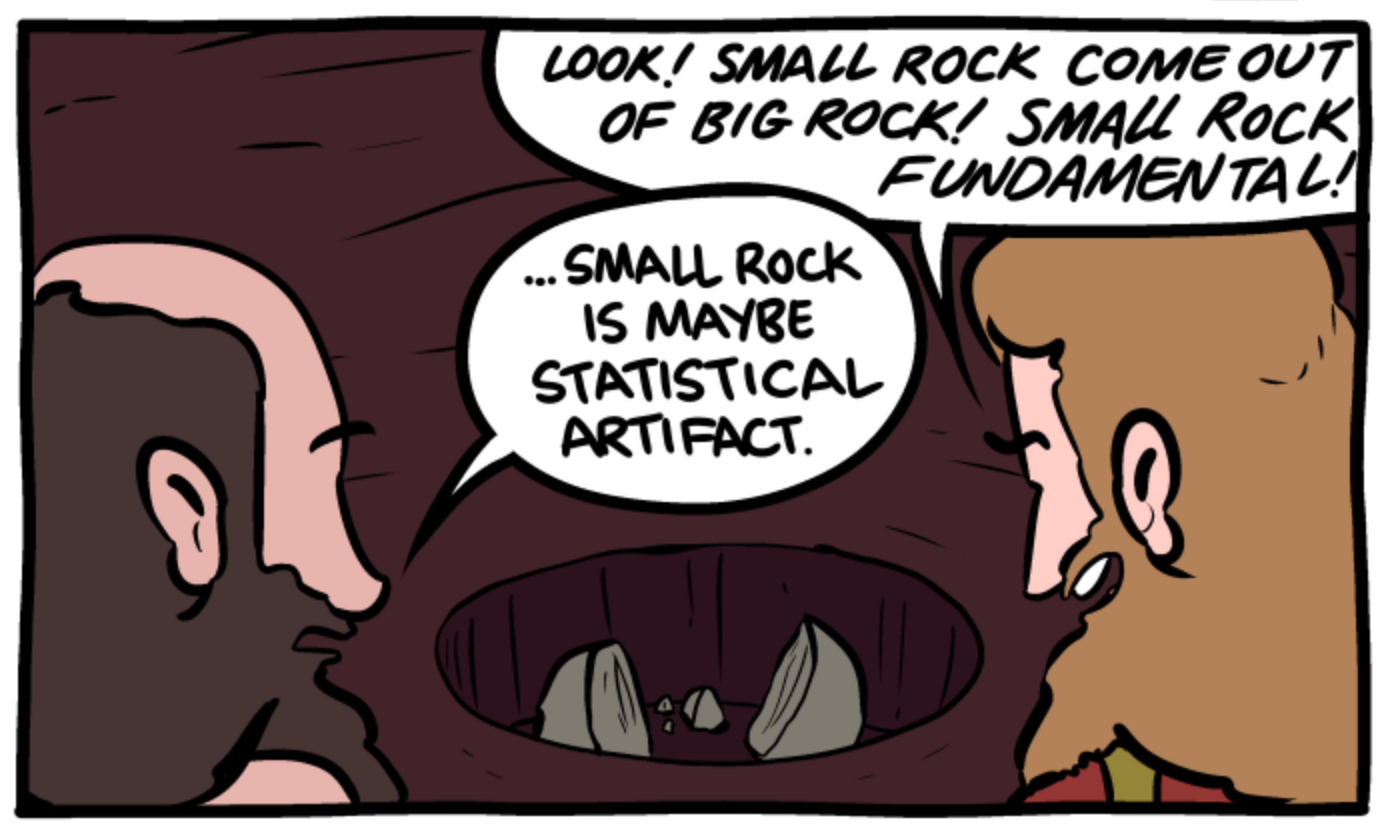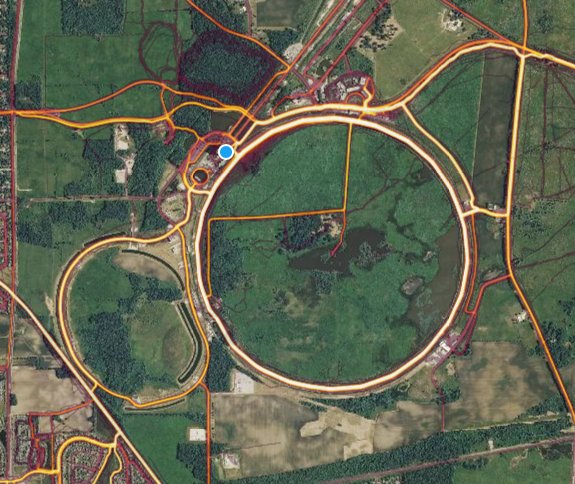What does an experimental particle physicist do: the simple answer
steemstem·@freyablekman·
0.000 HBDWhat does an experimental particle physicist do: the simple answer
The shortest answer of what experimental particle physicists do is _"we break particles to check what is inside and then build cameras to actually look at the broken particles. Then we interpret what is inside"_ this is of course the most simplistic way to look at particle physics, like a child who breaks up a toy to see how it works. And I get to use fancy equipment to do this, like the great [Compact Muon Solenoid](https://cms.cern/) detector. Here with another pic of me with my detector: <center>  _The CMS experiment in 2010, and I found a helmet to match my sweater! Photo by J. van der Heuvel_ </center> However the metaphor is not as far as you would think, we just use fancier machines to look inside smaller and smaller spaces. This has for example already been explained in this excellent [Saturday Morning Breakfast Cereal](https://www.smbc-comics.com/?id=3554) comic. <center>  _One frame from the outstanding SMBC comic on particle collliders, [source: SMBC](https://www.smbc-comics.com/?id=3554)_ </center> Since the middle of the 20th century universities, countries, and organisations like the european consortium CERN, have regularly built dedicated machines that collide particles as often and as efficiently as was possible at the time. The [Large Hadron Collider](https://en.wikipedia.org/wiki/Large_Hadron_Collider) is the latest of these machines. Before it started, the [Tevatron](https://en.wikipedia.org/wiki/Tevatron) collider at [Fermilab](https://en.wikipedia.org/wiki/Fermilab) (near Chicago in the USA) was the most powerful collider, I spent a substantial fraction of my career working at that machine. Unlike the LHC, which is underground, the Tevatron collider was installed at ground level, providing plenty of exercise for the physicists as well as you can see from this fun running heatmap by one of my colleagues at Fermilab: <center>  _Source: [twitter feed of Chris Quigg, Fermilab theoretical physicist] (https://twitter.com/chrisquigg/status/958052549323567104) [strada](https://labs.strava.com/heatmap/#2.00/-56.91562/39.59133/hot/all)_ </center> So, accelerators do not necessarily need to be underground. The main reason the Large Hadron Collider is underground is because there already was a tunnel there. And the tunnel was already there because it is easier to clear 27 kilometers underground than at ground level. In future posts I intend to explain more on *how we collide* and accelerate particles, *how we look at the collisions* and of course *what we learn from these collisions*. All of these bring huge technical challenges that are interesting by itself, so deserve at least one separate blog post, just for the introduction. Stay tuned!
👍 freyablekman, afrinsultana, urbanoanderson, herverisson, psilocybit, bagindooo, bachuslib, punky, m-san, masril, serylt, reggaemuffin, vikisecrets, danielwong, munnapandey, davidshane, k9disc, sco, linerus, photoquote, its.parth.hey, rofilm, scienceangel, ivet, ertwro, bendelgreco, robotics101, dudithedoctor, suesa, justtryme90, steemstem, dna-replication, curie, locikll, anwenbaumeister, hendrikdegrote, hadji, kushed, pharesim, markangeltrueman, howtostartablog, zacherybinx, phogyan, justdentist, fujiwara, horpey, plojslydia, bridgetdaniels, kerry234, maidisangkot, jasimg, motivatorjoshua, shaff.aff, xanderslee, arrjey, williams-owb, chemistry0, sikan-eyen, snowgoat, emanuellindqvist, responsive, pichat, jacalf, keshawn, steemanator, aboutyourbiz, slickhustler007, mseuno, karyah1001, bleyker, birgitt, spectrums, votetanding, speaklife, bimijay, adebayopaul, mrxplicit, geekis, sephirods, ligarayk, randomwanderings, babaj, jmdk2000, binarycounter, kimp0gi, medical-hall, kul0tzzz, zipporah, jerscoguth, shawnycx, pojgaerlan, jga, makrotheblack, intellectualsoul, circleoffriends, rejzons, markmorbidity, tstinfo, anarchojeweler, strings, monoarc, mckeever, dyancuex, tensor, helgapn, jacoblayan, cgbartow, dethclad, punwik, saahir, positiveninja, guchtere, vadimlasca, infinitelearning, gotgame, rmz, mikeb570, pwner, lemouth, anonymous13, neneandy, sanja-cash, techslut, zest, steempty, fminerten, stayyoung, salvadorcrg, mindscapephotos, marshalllife, ordosjc, teamhumble, eric-boucher, singhbinod08, coloringiship, jaeydallah, gohba.handcrafts, tanvirrahman, delph-in-holland, nwjordan, blueproject, django137, hillaryaa, magicbirds, goldeneye64, ludezma, oleg5430, nasruddin, drac59, soaljack, marlbwhale, goal300, mobbs, majdimajdi, milonhazary, ribbitingscience, profanereviews, macmaniac77, effectivemaus, nonationnoborder, angelacs, decadence, ilusil, tychoxi, koesnoom, curiousmatter, timothyb, mrs.agsexplorer, grandpere, timsaid, alexander.alexis, ovij, somethingburger, kedi, geekpowered, jamhuery, steem-id, velourex, steemedia, cotidiana, teofilex11, bp423, dreamien, cryptonator, steemtaker, hrissm, shammi, cebymaster, gamesjoyce, redpillproj, dreamarif, saunter, santarius, steemstem-bot, samue2013, everjaimes, agamr4m4dh4n, killbill2018, wadecook, davidg83, sinbad989, asrizalmustafa, nayanbd666, sryashbd666, urmeebd666, thecavepeanut, boston99g, cyemela, lizactivate, irza, emretozlu, foruni73, chrisansahagun, pratik27, rezaleoni100, munmursyidin, agamitam, member9, ablaze, gijoge, dollargains, benainouna, cptnduras, mattzoidhead, sherlie, angeloliveros, altherion, hafeezullahkhan, johjoh, crypto-notloc, romanie, tricksters, birnabeatz, tectum, mcw, djredimi2, miramarcastano, doverun, tibra,